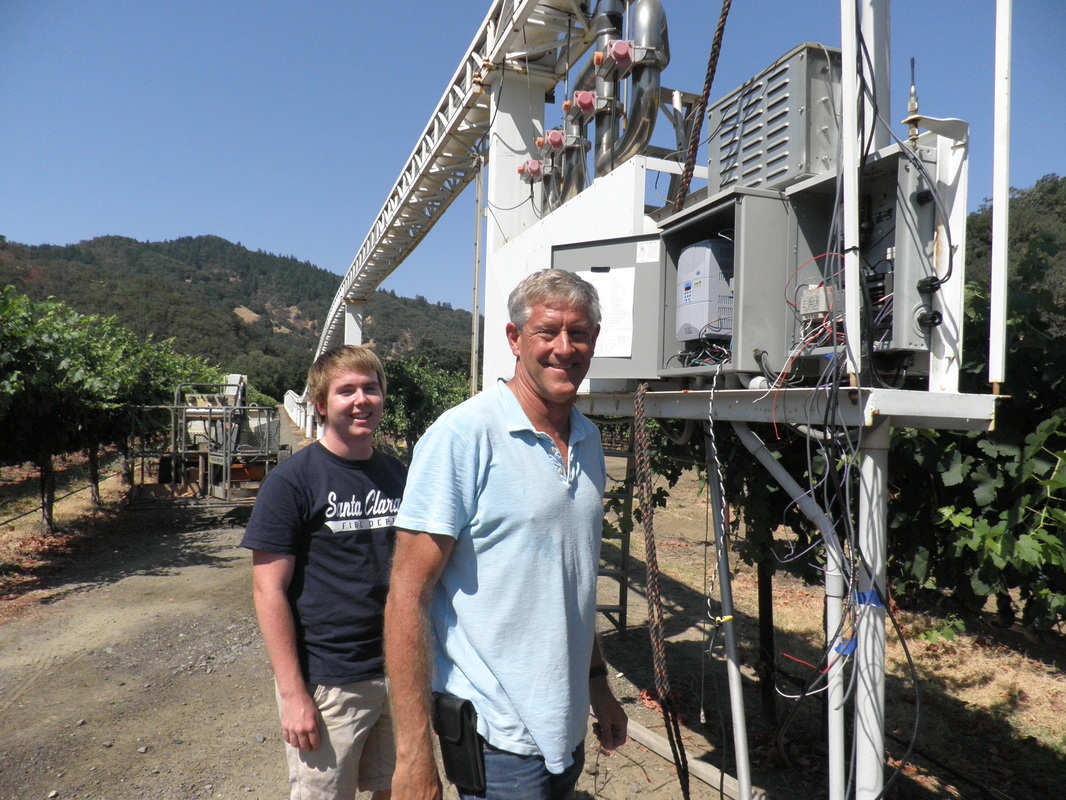Flight Rail's Engineering Manager, M. Eric Schlienger Ph.D., with intern Luke Robinson installing automated controls on the 1/6 scale pilot model blower/changeover valve system.Recent advances in the Flight Rail pilot scale model include improved utilization of pumping energy. The initial proof of concept design operated with one side of the thrust carriage subjected to vacuum (or pressure), with the other side open to atmosphere. This represents a condition that will be commonly observed during full sized implementation, but does not take into account optimal energy utilization as the VECTORR unit passes a pumping station. On our test system when the unit (actually the thrust valve) passes the pumping station, the pumping station switches from pulling the unit (vacuum) to pushing the unit (pressure). For our initial trials, at the transition from vacuum to pressure modes of operation, the valve at the open end of the power tube would close, and the valve at the closed end would open. These valve motions support the transition of the operating mode from vacuum to pressure. However, our initial valve timing, (wherein the valve motion occurs as the thrust valve passes the pumping station inlet), does not take into account the loss of energy associated with the opening to atmosphere of the already evacuated portion of the power tube in advance of the thrust carriage. A new sensor suite, developed using Arduino boards by our summer intern Luke Robinson, has been added to provide accurate thrust carriage position sensing and precise pressure monitoring of the power tube. With the new position sensors in place, we are able to accurately gauge the timing of the transitions between vacuum and pressure at each of our inlet ports. The addition of the precision differential pressure sensors provide the ability to delay the opening of the power tube to atmosphere until the usable accumulated vacuum energy in front of the thrust carriage has been expended in the production of additional thrust. As a side benefit, the position sensors also provide velocity data. The combination of these sensors results in a smoother modal transition, a more uniform thrust profile and better energy utilization. We see this as a very positive development in the demonstration of the real world application of this technology.
0 Comments
Your comment will be posted after it is approved.
Leave a Reply. |
Archives
July 2017
Categories |


 RSS Feed
RSS Feed